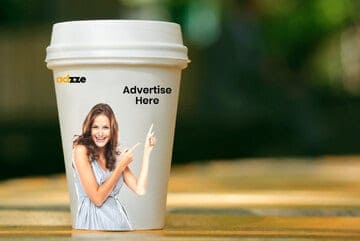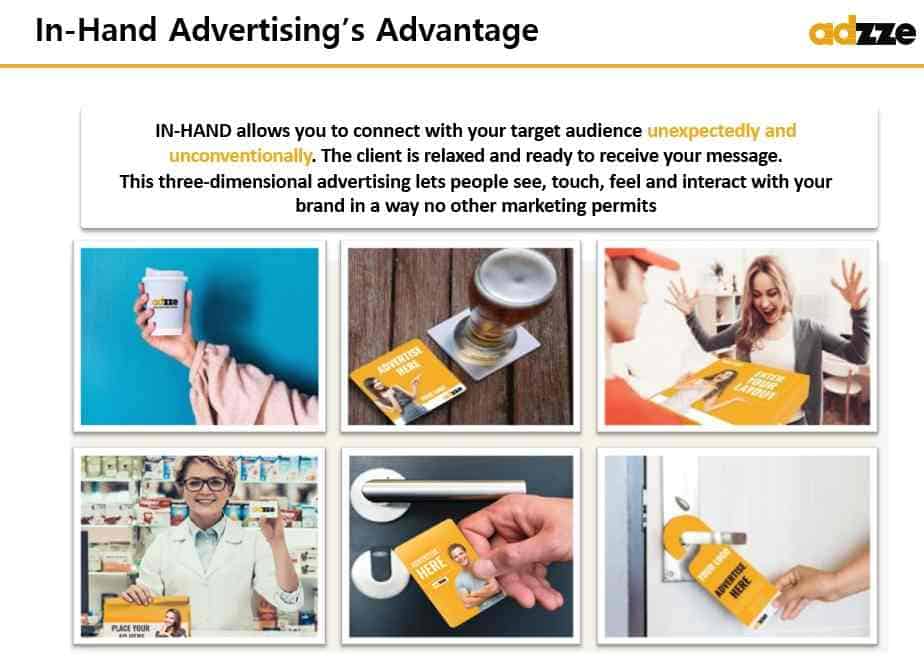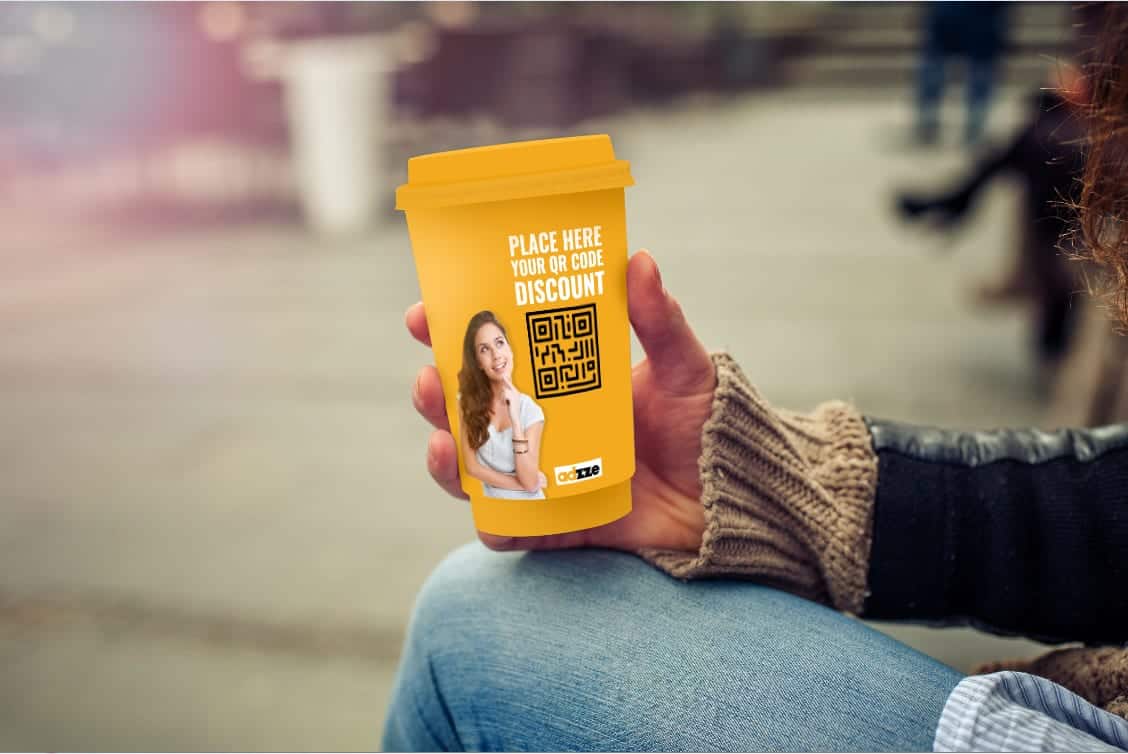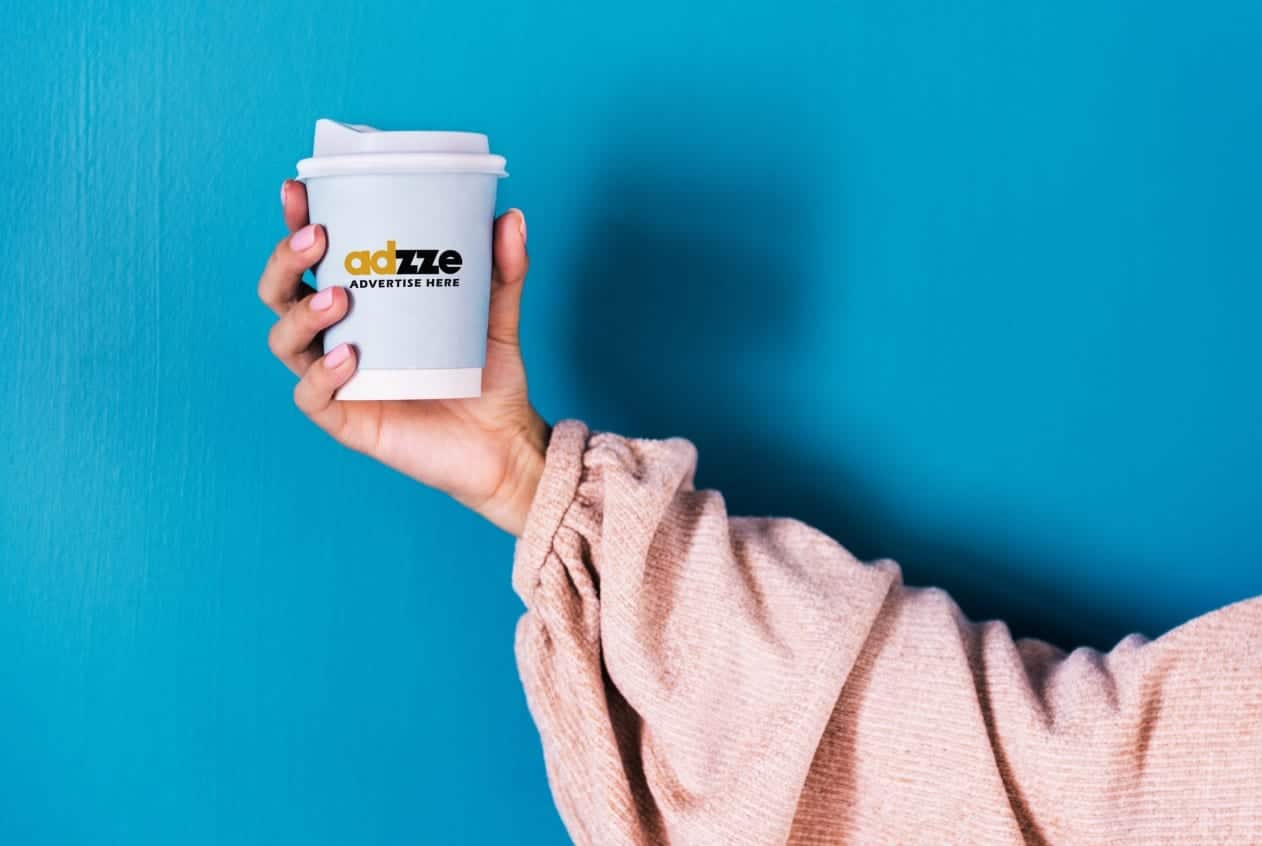What is Coffee Cup Advertising?
Coffee Cup Advertising is a unconventional way to surprise the recipient of the message. Advertisers place the company logos on consumables getting the marketing message directly to the hands of the consumer. The ads are printed on sleeves that protect coffee drinkers from hot coffee. The cup sleeves are distributed to the cafe stores selected by the advertiser. Specific targeting is provided with an in-house tool to profile the demographic profile and identify specific coffee venue addresses. Learn all about cups advertising here! You’ll discover how this marketing strategy can benefit your business.

Not only do these types of ads go directly into the hands of the consumer, they can be much more detailed than other ads such as billboards or radio. As a result of seeing such an ad that might contain a call to action, a QR code, or a contest, consumers are much more likely to remember these advertisements over others. Additionally, this method of marketing not only shows promise in recall rates, but it also has several other distinct advantages over both traditional and non-traditional methods of advertising.

In-the-Hand Advertising is an emerging concept of ambient marketing that replies on place ads on vehicles that consumers touch at daily basis as: pizza boxes, bar coasters, shopping bags, prescription bags, door hangers, hotel key cards, dry cleaner hangers
Why Coffee Cup Advertising delivers high brand lift?

Usually, each venue distributes approx. 1,000 coffee cups/month, generating an estimated total of 0.75M impressions. It works as a small moving billboard that the consumer will grab and carry it forward. The coffee venues deliver in the hand of the consumer generating an impact up to 70% brand lift. The advertisement can not be ignored as the consumer will grab it in their hands. On average, each coffee cup will provide 35 min of exposure. Coffee Cup Advertising provide an additional exposure to other viewers who are in the surrounding. The unconventional nature of this type of advertising makes it memorable while touching a logo while grabbing a coffee.
This concept is sub-segment of ambient advertising that its been proven by research studies (1,2) to demonstrate better perception and engagement in comparison to traditional OOH.
Comparison to traditional OOH
Advertising with billboards takes a considerable time, energy and money. The flexibility is limited as most billboard companies require advertisers to close long-term contracts. If your campaign strategy requires flexibility and multiple messages delivered at specific times, billboards are not the right media. Billboards are also difficult to target. Many commuters are subjected to dozens of billboards each day with limited attention span. Billboards becomes easy to be ignored and the short exposure limits the recall rate of the audience.
Cost comparison: Billboards v.s. Coffee Cup Advertising
The costs of billboards depends on format, circulation, demographics, and impressions. Traditional billboards cost $14,000-20,000/month in larger markets.
With the cost of 1 billboard/month, the advertiser can place its message on 40,000 coffee sleeves to 40 different coffee shops during the same period of time.
Sources:
- Luxton, S. What is called Ambient Advertising? Monash University. 2000
- Gambetti, R. C. (2010). Ambient Communication: How to Engage Consumers in Urban Touch-Points. California Management Review, 52(3), 34–51






